What’s next for music discovery
Fred Jacobs discusses the past, present, and future of music discovery from radio to streaming and social media, from human curation to algorithms, and back again.
by Fred Jacobs of Jacobs Media
In recent months, we’ve had much debate revolving around A.I.
But almost none of it has had a whole lot to to do with how we discover new music. In a recent post, I talked about the “long tail” effect, where there’s no central exposure point for music anymore. Most consumers have cobbled together their own patchwork network of finding new releases and new bands, assuming that is if they still care about the latest and greatest in music.
Like playing pro sports competitively, the window closes early and fast. You’ve heard the expression, “It’s a young person’s game.” That holds for football, basketball, and for new music discovery. It is always eerie to hear sports announcers talk about how a player is “getting up there” – at the age of 35. And with few exceptions for sheer athleticism and great genes, most athletes call it quits well before they reach “the big 4-0.”
Similarly, leaning heavily into new music, actively discovering’s what new and next, and spending time (and money) seeing new performers in concert effectively comes to an end by around the age of 30. Now I know many of you in radio and the music business have a keen interest in new music, but because of your professional interests, you’re unicorns. For most people, active music discovery slows down considerably on the other side of 30.
A story that appeared earlier this year in ABC Net News in Australia addresses this phenomenon. “Why do we stop exploring new music as we get older? “ by Timothy McHenry explores many of the conditions that make music discovery a young person’s pursuit.
But is it?
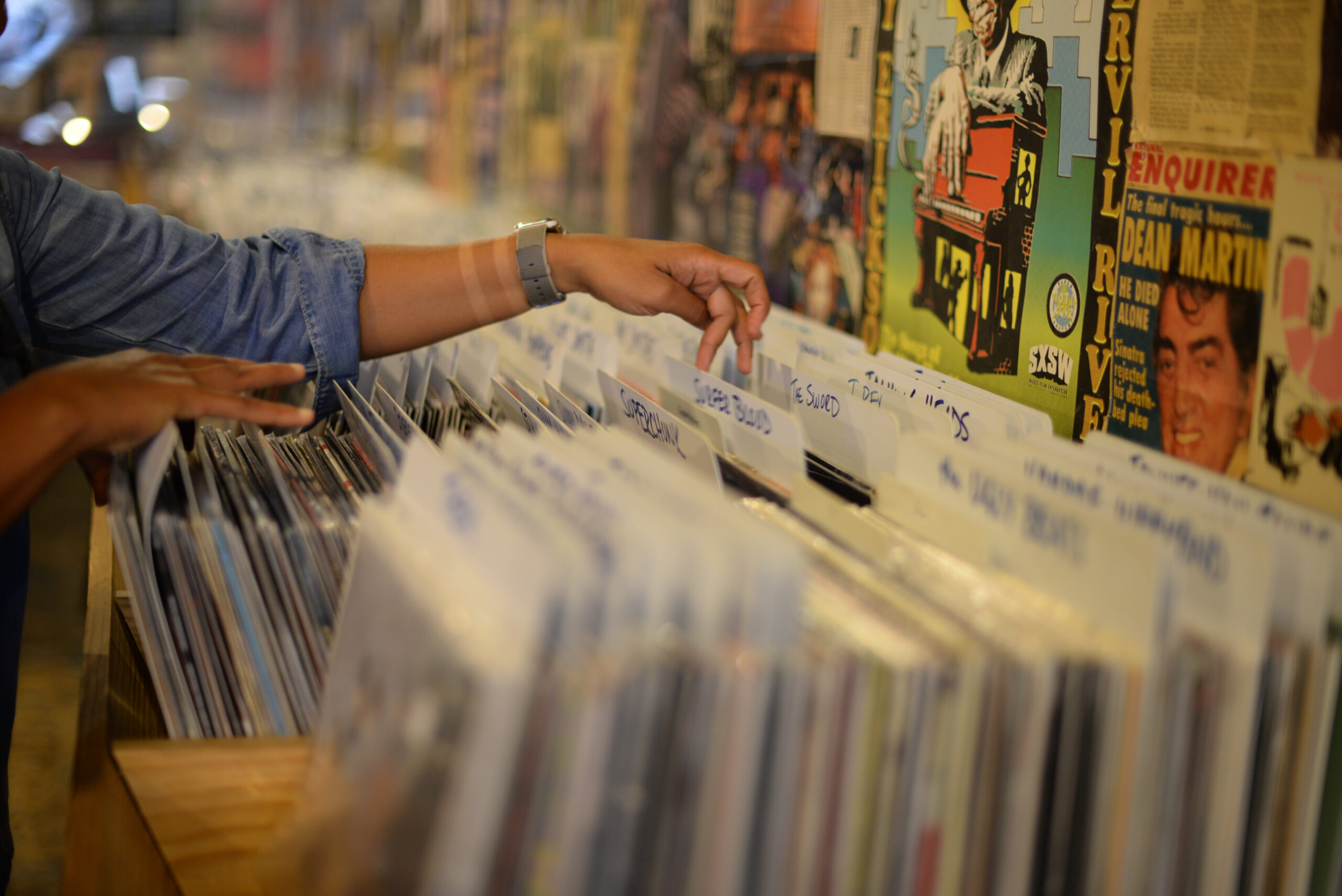
I think back to when I was a teenager, and the bulk of new music discovery happened on the radio, along with the input of human influencers, such as friends and family. Pretty much everyone was listening to the same music at the same time, making it easy to have a reference point – common musical ground.
From that experience, many of you reading this blog ended up going into the radio or record industries. Why? Because you were inspired by music, reveling in the chance to make it your profession. Many station and label people grew up wanting to be John Lennon, Joan Jett, or Kurt Cobain. The next best thing? Radio or music as a career.
But how might that work today? If you talk to most of the young people who actually aspire to work in radio or related media, most are into sports. They want to work in sports radio, play-by-play television, or the Holy Grail – work for ESPN.
Considerably fewer want to be a program director or even an air personality. Maybe that’s because the music component in radio has been eroding for some time now. There’s not a lot to discover. When I look at our newest Techsurvey, broadcast radio as a discovery mecca continues to lose altitude with each passing year. True, the radio audience is aging, moving further away every year from the new music sweet spot.

Broadcast radio as a medium no longer delivers on the new music promise. And we’ve got all the excuses. Playing new music is too risky. There’s no good new music out there. It’s not congruent with getting good ratings. The labels no longer support us playing it.
And so it goes.
Meantime, other platforms are figuring out how to do it – and make it work.
TikTok is the newest of the entrants. While Montana has allegedly banned the app (and other states are considering similar action), TikTok continues to break digital and cultural ground. Its newest set of tools includes the debut of a New Music Search Hub in the TikTok app.
Social Media Today‘s Andrew Hutchinson breaks it down in a recent story. The “hub” is designed to shine the light on up-and-coming artists.
TikTok describes the new feature set this way:
“….a dedicated space for artists around the world to showcase their new songs and for fans to discover their next favorite track. The #NewMusic hub will act as a destination for new music, highlighting new releases and making it easier for fans to discover the latest tracks from both new and established artists.”
With a few well-placed edits, the TikTok team could have been describing progressive rock FM radio in the early 70’s or MTV in the early 80’s.
TikTok’s claim? To “enable fans to discover the best new music before its heard anywhere else.” (Seems to me I’ve written radio station liners that said essentially that.)
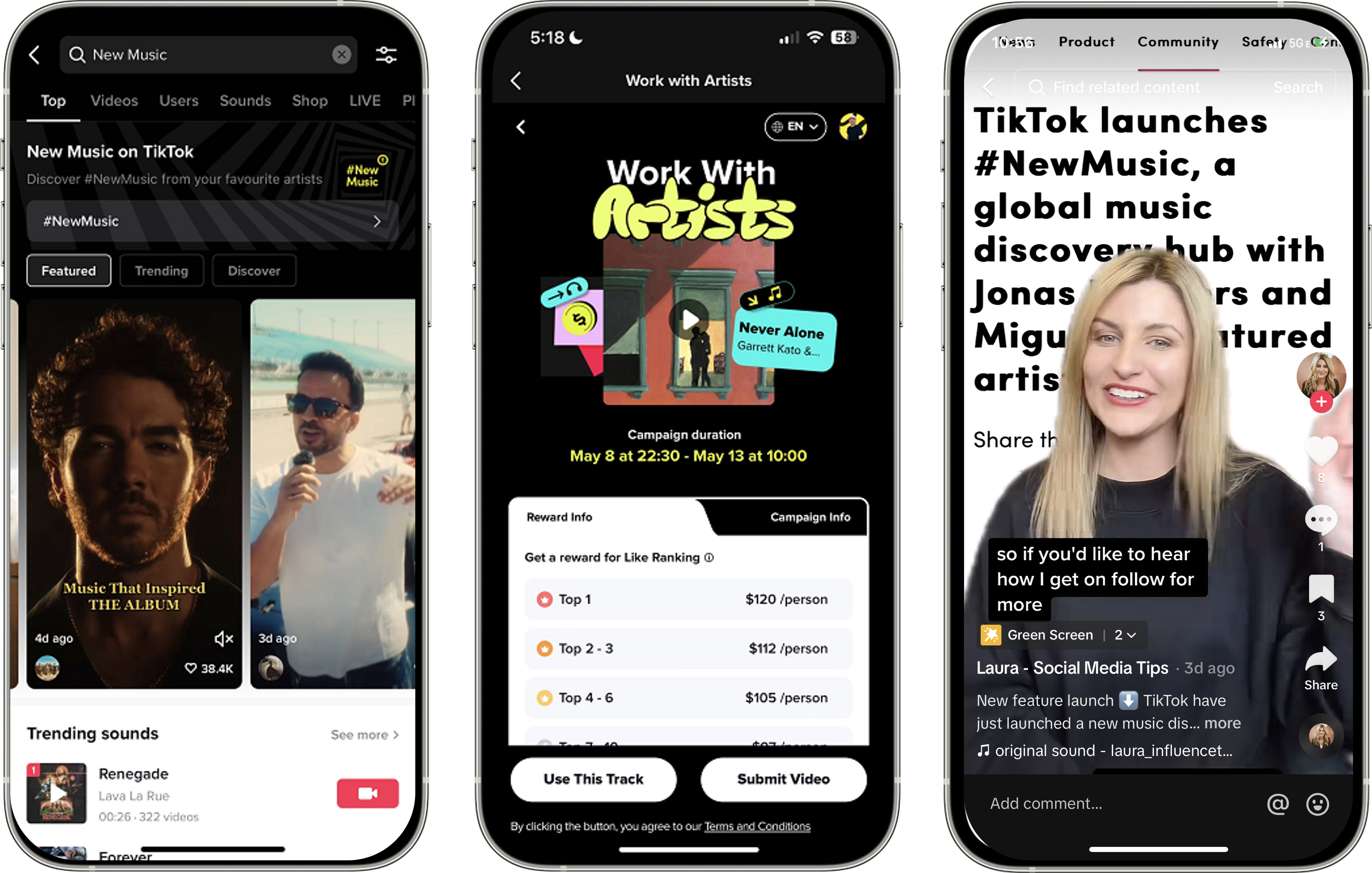
The first two screen caps are from the Social Media Today story – a look at the main screen (left) shows you how TikTok will showcase the newest music from popular artists.
The middle screen grab shows their “Work With Artists” feature designed to provide more exposure for new musicians on TikTok. Hutchinson notes the importance of audio on TikTok videos, and points out how musicians can offer incentives for content creators on the platform to integrate their songs.
The final screen shot is an indication of how this new TikTok feature is being enthusiastically received by the community. Clearly, many users will embrace this new music content, ostensibly making it more prominent, popular, and valuable.
Not to be outdone, the New York Times (yes, they’re at it again) is diving into the new music space, too. Although they’re doing it much differently than TikTok, utilizing their bread and butter:
Newsletters
A couple weeks ago, I received an email with this line in the subject box:
Hand-picked music, delivered weekly.
If I didn’t know better, I’d swear this was written by a radio person, now working on a new newsletter for the Times – “The Amplifier.”
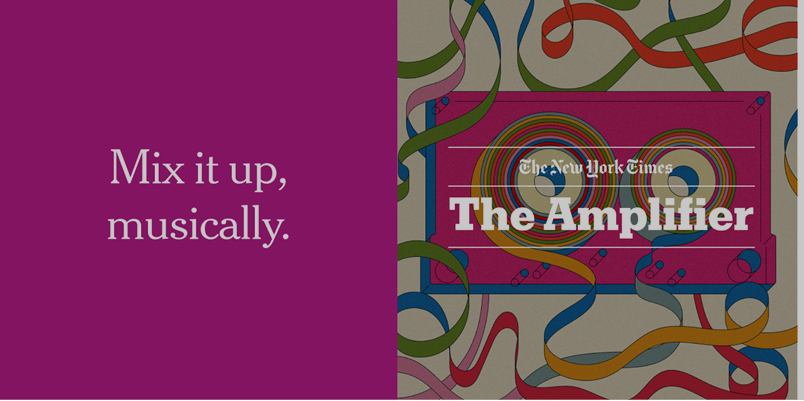
The newsletter is being positioned as bringing “a human touch back to music discovery, delivering predictably eclectic playlists twice a week, and introducing you to music new and old.”
We’re got to stop thinking about the New York Times as a newspaper. It’s a content hub, traveling well outside the concentric circles of journalism covering politics, international news, the nation, and commentary.
I did some digging and discovered something beyond music. The Times is using newsletters to mine audiences outside its “signal contour.” There are scores of them,touching on diverse subjects including climate, New York City restaurants, Internet news, soccer, books, and etiquette.
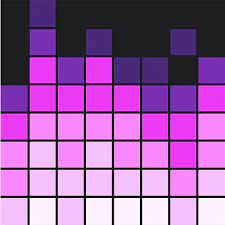
A little searching around found “Louder,” another music-centric newsletter from the Times. This one’s described a once-a-week focus on pop music, including albums reviews, artist interviews, and other related content.
Again, it’s an opportunity for the brand to step beyond its normal confines to embrace verticals their team must believe contains burgeoning audiences.
Of course, not all these newsletters will play out. In fact, the batting average may be relatively poor. But the Times doesn’t need to be thinking “fail fast” or even asking the question, “When will be able to monetize these?”
The play here is to expand to near-adjacencies, whether it’s culture, journalism, commentary or any of the other content spokes the brand touches.
Newsletters represent a major opportunity for radio to embark upon content expansion. So why – with the exception of mostly public radio – have broadcasters been slow to embrace the possibilities?
Last summer’s PRTS 2023 illustrated the public radio opportunity.
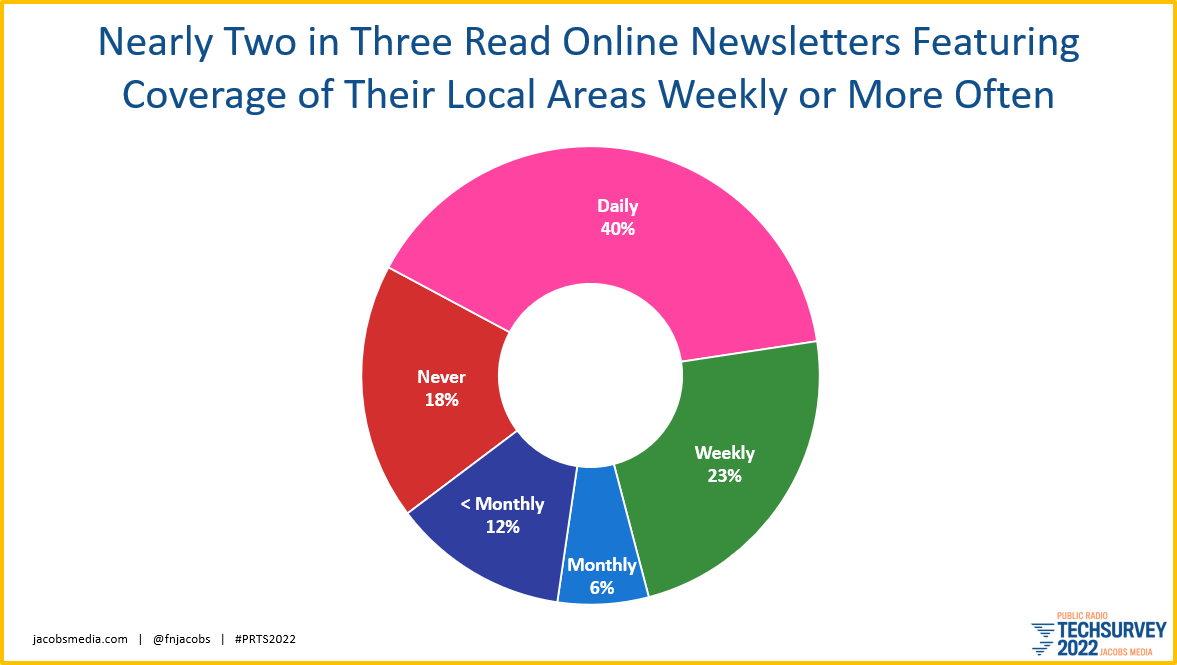
This looks like a mainstream opportunity to me. But commercial radio tends to veer toward web articles, while public radio content creators are often quick to remind me, “WE have a newsletter.”
Singular?
The bar to entry couldn’t be lower. After all ChatGPT or Jasper could produce initial drafts. Printing presses aren’t needed, newsletters are sponsor-friendly, and the good ones generate thousands of email addresses for the database.
With all this media activity from the Times and TikTok – and let’s not forget about Spotify’s extensive toolkit, “Spotify for Artists” – the new music image is up for grabs, and many of the biggest names are working hard to win this mantle.
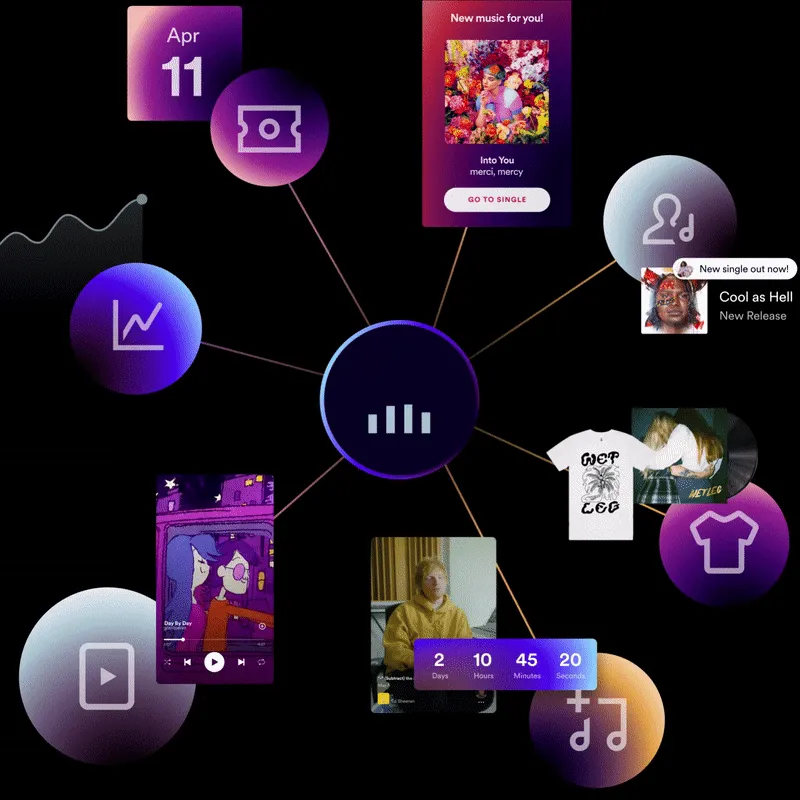
So, radio is obviously SOL, right?
Maybe not. The medium still has some gas in the new music tank. Radio’s overall exposure numbers still place it well above most other music platforms. But radio – capital “R” – is playing very little in the way of new music system wide. And that’s not likely to change.
But there is one area where radio broadcasters can still “own” the new music hill:
Local music.
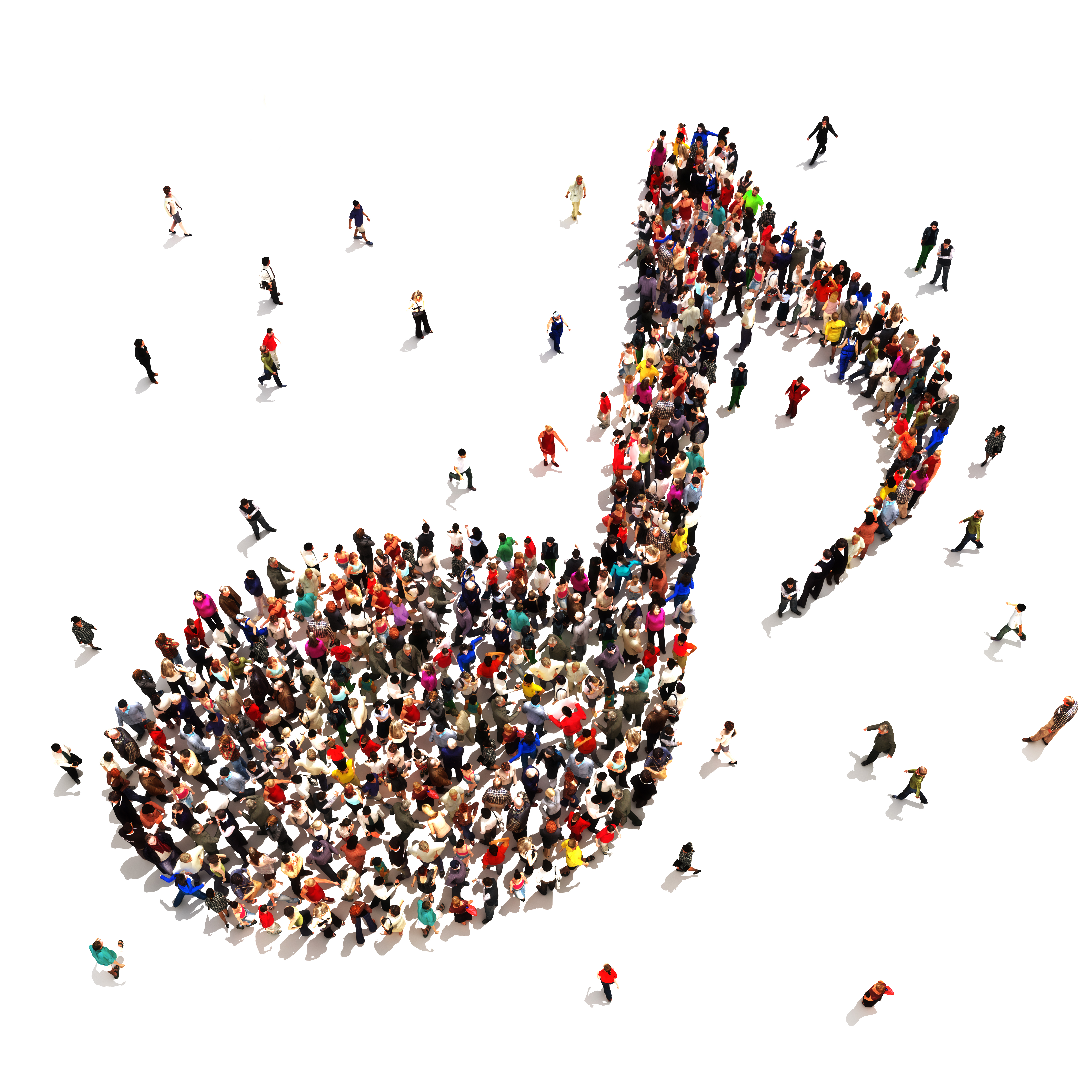
Chances are, TikTok, the New York Times, Spotify and everyone else won’t know the first thing about those rising stars in your market. But you do. Or you should.
As we continue to see in our Techsurveys, our focus groups and one-on-ones, local spirit and pride seem to be peaking, post-pandemic. That represents an opportunity for a station (or stations) in each and every market to rejoice around its hometown music.
Wherever we go, we hear the same mantra – the natives are proud of their hometown artists and bands, whether we’re talking Duluth, Des Moines, or Detroit.
And now the digital toolkit makes it relatively simple to expose and champion your town’s local music. It might be a separate page on the station website, complete with tracks and a voting mechanism.
It could be a podcast (assuming you can gain clearances from your local performer). Or an HD2 channel, the perfect place to direct fans of the local new music offerings.
Want to take it a step further? Launch a mobile app dedicated to music in your city or region. And nailing down local business to sponsor or underwrite the app (or these other resources) should dovetail nicely in supporting the hometown commerce.
Notice I haven’t mentioned actual airplay, realizing how gun shy so many programmers or companies might be to actually give on-air exposure to local bands. But if you do this right, your activities on the hometown music environment should actually spawn hits – songs you get to play exclusively and artists you’re able to support.

Back in the day, rock stations often undertook these “Homegrown” efforts, often expensive and people-intensive to run and manage. But they could be immensely rewarding.
The Doubleday station in New York City, WAPP, featured an artist named Jon Bongiovi on their “Hometown” album showcasing local licks. The track? “Runaway.” I highlighted this moment in a blog post five year ago: “You Give Radio A Good Name.”
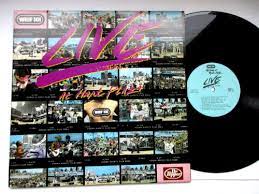
When I programmed WRIF in the early 80’s, our local music initiative revolved around showcasing local bands live in concert from Hart Plaza during the summer months, an intimate outdoor venue on the Detroit River. The effort culminated with a festival show at Pine Knob, the local shed, as well as vinyl record album that compiled each band’s single.
Four decades later, it would be a tough task for more radio stations to pull off this type of multi-layered promotion. But thanks to digital resources and outlets, everything we did with “Live From Hart Plaza” could be accomplished less expensively, more effortlessly, and without any ratings fallout. It’s just a matter of focus and effort.
There’s no reason for radio to sit on the new music sidelines.
I don’t buy the fact there isn’t any great new music out there. Nor do I accept the notion that people don’t care.
Or you could always go on TikTok and check in with Kelise and the thousands of new music prospectors out there.
I’m making a decent compensation from home $62k/week , which was astonishing under a year prior I was jobless in a horrendous economy. I was honored with these guidelines and presently it’s my obligation to show kindness and share it with Everyone,
.
.
Here is I begun————————————➤ https://goodjobs2.pages.dev/
You can add this one to your list too http://www.vnyl.app it seems to be constantly updated and getting better each time I use it.
The world of music is rapidly changing with the rapid advancements in Artificial Intelligence and the advent of the Metaverse. With these technologies, the possibilities for music creation, distribution, and consumption are virtually limitless. AI can analyze and process vast amounts of data, allowing music creators to generate new sounds and compositions with ease. The Metaverse, on the other hand, creates a new digital realm where music can be experienced in entirely new ways. I have found some amazing betting apps New Jersey which are going to make me rich and they have info about all you need to know related to betting in New Jersey.